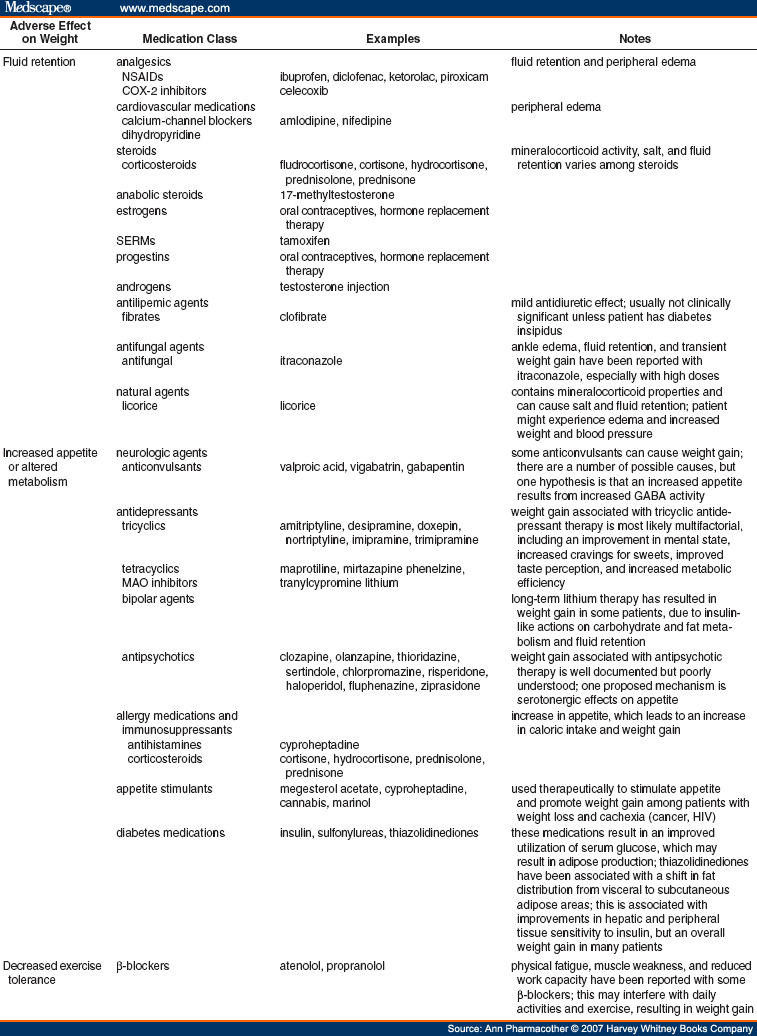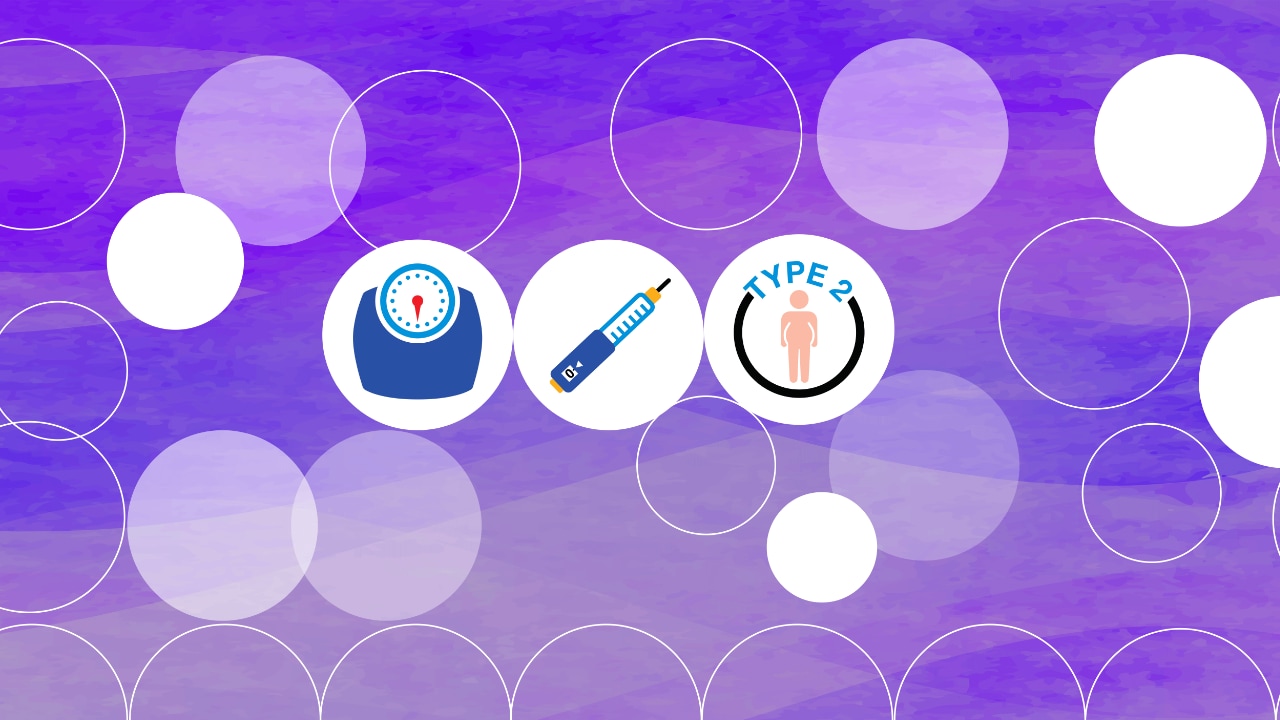Methods
Program Development
Developing Paperwork and Education Materials. The National Institutes of Health (NIH) guidelines were used to develop all program materials.[15] A form was developed to focus the intake process and improve practitioner consistency (Appendix I; available online at www.hwbooks.com/pdf/appendices/E466.pdf). A packet of patient education materials was also developed that included a nutrition and exercise journal; education leaflets on physical activity, daily exercise, balanced nutrition, food label interpretation, and portion size; and a pocket calorie and fat gram reference. All materials were reviewed by a registered dietitian.
Selecting Equipment. The AUPCC examination rooms were outfitted with all devices needed for patient assessment and evaluation. Equipment that was selected included the Tanita TBF-300A Professional scale and bioelectrical impedance analyzer for measuring weight and body composition analysis; measuring tapes for taking body measurements; mercury sphygmomanometers for measuring blood pressure; Cholestech LDX lipid analyzers for evaluating serum lipids; various glucose meters for blood glucose screening and monitoring; and a Bayer Hemoglobin A1C instrument for evaluating diabetes control.
Marketing the Service. One of the benefits of providing a pharmaceutical care service in the workplace, such as a college campus, is the connectivity of the targeted population. The AUPCC utilized the campus e-mail system, the college newspaper, local radio stations, the Auburn University Web site, and campus fliers to advertise the service. The director of the program also provided presentations to academic units and supplied information for the new employee packets in the Human Resources department. Letters were sent to local physicians describing the AUPCC and the Healthy Habits program. In addition, local physicians were encouraged to refer Auburn University employees to the program.
Program Implementation
Initial Patient Interview. In order to collect a complete medical history, identify all opportunities for pharmaceutical care intervention, and educate the patient concerning nutrition and exercise, 1.5 hours were reserved for the first appointment. Patients were instructed to complete the first section of the intake form (through patterns of physical activity) and fill out an authorization to release medical information form for each of their physicians so that medical records and laboratory data could be obtained. Patients were encouraged to bring all of their medications to the first appointment, including prescription, nonprescription, and dietary supplement therapies. They were also instructed to bring any medical data to which they had immediate access, such as copies of laboratory data, progress notes, or medical reports.
Most of the initial appointment centered on collecting the medical history, beginning with past medical history. At this point, the pharmacist would evaluate whether the patient was at risk of developing any weight-related complications. The pharmacist would also screen for any disease states that might be contributing to weight gain, such as hypothyroidism, or any disease states that might interfere with weight loss. For instance, if a patient has chronic anemia, uncontrolled asthma, degenerative joint disease, or depression, he or she might not feel like exercising regularly or have the exercise capacity necessary to lose weight. If a patient has congestive heart failure or liver disease, fluctuations in fluid levels might interfere with monitoring changes in fat and muscle weight. Next, the pharmacist would evaluate the patient's family history, focusing on any history of common obesity-related complications. Identifying existing complications or risks would be an important part of the evaluation. Often, increasing patients' awareness of these risks might alter their readiness for change and move them closer to the action phase of the transtheoretical model of change.
Next, the pharmacist would collect a complete social history, including information concerning living arrangements, family structure, household responsibilities, daily schedule, work environment, daily activity levels, hobbies and interests, and social support. These data would be utilized to develop a nutrition and exercise plan. Next, the pharmacists would collect a medication history and carefully screen the medication list to identify any that might cause weight gain or interfere with weight loss by causing fluid retention, increasing appetite, or decreasing exercise capacity ( Table 2 ).[16,17] Finally, the pharmacist would conduct a review of systems to ensure that no medical issues were forgotten or overlooked.
Physical Assessment. The patient's height, weight, body composition analysis, waist circumference, blood pressure, and heart rate were evaluated during the initial visit. Due to time limitations, lipid testing was usually reserved for the second appointment.
Developing an Assessment and Plan. After all subjective and objective data were collected, the pharmacist would interpret the body composition values for the patient, evaluate readiness to change, establish a target goal weight range, estimate daily caloric requirements for weight maintenance, establish a calorie and fat gram budget for weight loss, and set exercise goals. The NIH guidelines were followed for all aspects of the assessment and plan. The goal rate of weight loss was set at 0.45-0.9 kg/wk. Patients were instructed to create a calorie deficit of 500-1000 kcal/day through calorie restriction and exercise. The US Department of Agriculture food guide pyramid was emphasized and the patients were instructed to select high-fiber, complex carbohydrates; fresh fruits and vegetables; and lean protein sources. Behavior modification through journaling was stressed, and patients were encouraged to develop a structure of social support.
Also, a plan for addressing other pharmaceutical care needs and monitoring other disease states and drugs would be developed during the initial appointment. Follow-up appointments would be scheduled to conduct other screenings, such as lipid levels, determinants of osteoporosis, or blood glucose levels as needed, to address all of the patients' health and wellness needs.
Patient Monitoring. Fifteen minute follow-up appointments were typically scheduled every 2 weeks. Once patients reached their target weight and maintained it for 3 months, they were encouraged to decrease the frequency of their visits to monthly appointments. Other patient issues were addressed as needed during the follow-up visits.
Other Initiatives. Campus connectivity was very beneficial in improving communication with patients. For instance, the e-mail system was used to send appointment requests, follow-up reminders, and respond to patient questions. Intake forms were e-mailed to new patients to expedite the paperwork for the first appointment.
To provide further support for the patients enrolled in the Healthy Habits program, the faculty and students developed an electronic newsletter called "Developing Healthy Habits," which is circulated by e-mail to all AUPCC patients enrolled in the Healthy Habits program.
Role of Pharmacotherapy. According to the NIH guidelines, pharmacotherapy should be reserved for patients who are obese, with a body mass index (BMI) of 30 kg/m2 or more, or who are overweight, with a BMI of 27 kg/m2 or more, with existing weight-related complications.[15] Before considering pharmacotherapy, it is important for patients to demonstrate a willingness to make lifestyle changes.[18] The AUPCC pharmacists supported the NIH recommendations that a minimum of 6 months of diet and exercise should be initiated before pharmacotherapy is considered.[15]
If a patient failed a trial of diet and exercise and pharmacotherapy was considered an option, the AUPCC pharmacists would conduct an individualized assessment of the benefits versus the risks of treatment. If pharmacotherapy was deemed appropriate, the pharmacist's recommendation was shared with the patient's physician by faxing a letter with an attached progress note to the physician's office. After faxing the recommendation, the pharmacist would call the physician's office and talk with the physician's nurse to outline the recommendation.
Data Analysis. Retrospective data analysis was conducted to evaluate programmatic outcomes. Data were analyzed using SAS software (SAS Institute, SAS, Version 8, Cary, NC). In addition to descriptive statistics, paired t-tests were used to analyze the change in continuous dependent variables over time, and χ2 analysis was used to analyze categorical variables.
The Annals of Pharmacotherapy. 2007;41(2):185-192. © 2007 Harvey Whitney Books Company
Cite this: Implementation of a Weight Management Pharmaceutical Care Service - Medscape - Feb 01, 2007.













Comments